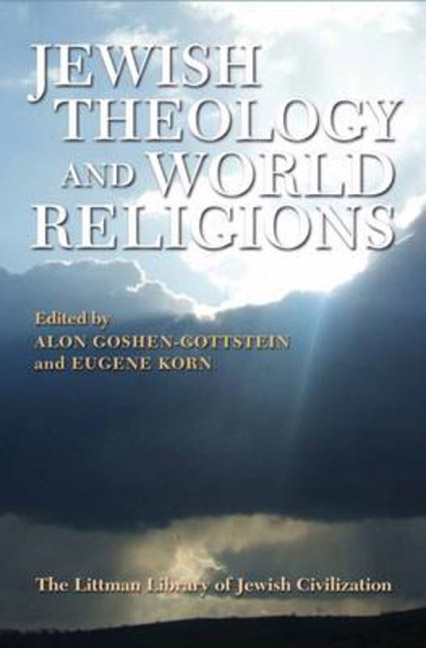Book contents
- Frontmatter
- Dedication
- Preface
- Contents
- Note on Transliteration
- Towards a Jewish Theology of World Religions: Framing the Issues
- PART I PHILOSOPHICAL PERSPECTIVES ON JEWISH PLURALISM
- PART II JUDAISM AND THE OTHER
- PART III JUDAISM AND WORLD RELIGIONS
- 8 Rethinking Christianity: Rabbinic Positions and Possibilities
- 9 Maimonides’ Treatment of Christianity and its Normative Implications
- 10 The Banished Brother: Islam in Jewish Thought and Faith
- 11 Encountering Hinduism: Thinking Through Avodah Zarah
- 12 Judaism and Buddhism: A Jewish Approach to a Godless Religion
- Concluding Reflections
- Notes on the Contributors
- Index
8 - Rethinking Christianity: Rabbinic Positions and Possibilities
from PART III - JUDAISM AND WORLD RELIGIONS
- Frontmatter
- Dedication
- Preface
- Contents
- Note on Transliteration
- Towards a Jewish Theology of World Religions: Framing the Issues
- PART I PHILOSOPHICAL PERSPECTIVES ON JEWISH PLURALISM
- PART II JUDAISM AND THE OTHER
- PART III JUDAISM AND WORLD RELIGIONS
- 8 Rethinking Christianity: Rabbinic Positions and Possibilities
- 9 Maimonides’ Treatment of Christianity and its Normative Implications
- 10 The Banished Brother: Islam in Jewish Thought and Faith
- 11 Encountering Hinduism: Thinking Through Avodah Zarah
- 12 Judaism and Buddhism: A Jewish Approach to a Godless Religion
- Concluding Reflections
- Notes on the Contributors
- Index
Summary
INTRODUCTION
ONE OF THE most pervasive conditions of modern life is empirical pluralism. Social, cultural, and religious diversities pursue us relentlessly today. The Emancipation of the eighteenth and nineteenth centuries moved most Western Jews out of their insulated ghettoes, granted them citizenship, and welcomed their participation in their mainstream national cultures, thus inevitably increasing their contact with their non-Jewish neighbours. In Europe and America, this meant closer, more harmonious, and more frequent interaction with Christians and Christianity. Even Jewish statehood, born out of the deep desire to free the Jewish people from subordination to non-Jews, willy-nilly has brought about unprecedented requirements for Jewish interaction with Christians and Christianity. Israel now assumes sovereign responsibility for the welfare and rights of more than 140,000 individual Christian citizens as well as numerous churches. And as the visits to Israel of Popes John Paul II in 2000 and Benedict XVI in 2009 have demonstrated, Israelis now must interact with Church officials to find respectful relations and common ground. This is true not only in the realm of realpolitik, but also in the religious domain, as the Chief Rabbinate meets regularly with high-level Vatican and Protestant clergy from abroad to discuss issues of mutual spiritual and practical concern.
Of course Jews and Christians met in medieval times also, but modernity saturates us with pluralistic interaction of a frequency, intensity, and quality not experienced in the past. The contemporary forces for social diversity are inescapable, and avoiding the religious other is impossible for a modern Jew— of any stripe.
The European Enlightenment created a vast secular space for the citizens of the new world. Since the French Revolution Jews and Christians have been meeting, speaking, and co-operating with each other in the offices of their professions, the corridors of government, the lecture halls of universities, and the public areas of their cities primarily as fraternal secularists. They have been pluralists who all too often were willing to trade their religious identities for the dream of social equality and mutual dignity. ‘Be a Jew in the home and a man on the street’ became the watchword for many Enlightenment Jews.
- Type
- Chapter
- Information
- Jewish Theology and World Religions , pp. 189 - 216Publisher: Liverpool University PressPrint publication year: 2012

